History of Missions
Modern Missionary Movement: Yesterday and Today
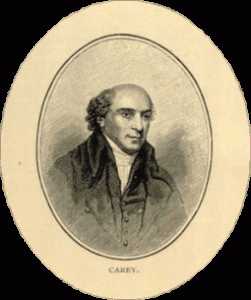 The biographies of the great missionary leaders that have gone before us should not only inspire us, but humble us. The sacrifices they made, the prices they paid leaving homes, families and comforts have few modern comparisons.
The biographies of the great missionary leaders that have gone before us should not only inspire us, but humble us. The sacrifices they made, the prices they paid leaving homes, families and comforts have few modern comparisons.
Beginning with William Carey, the father of the modern missionary movement, who sailed from England to India in 1793 to bring the gospel to the lost, we see the “shoemaker by trade, but scholar, linguist and missionary by God’s training.” Here is a man who, after 41 years in India, saw the Scriptures translated and printed into 40 languages, founded a college, mentored countless missionaries, saw numbers come to Christ, and eradicated the heinous practice among Hindus of burning alive the widows of their deceased husbands. This is the man who coined the phrase, “Expect great things from God, attempt great things for God.” Not without his share of suffering, William Carey saw his son die of dysentery on the mission field, and his wife suffer a nervous breakdown as a result, becoming ineffectual and incapacitated in the mission community until she finally followed her son to the grave.
Adoniram Judson, America’s first missionary, left for India to join Carey on February 12, 1812. One year later Judson found himself in Burma (now known as Myanmar) and devoted his life to bringing the gospel to the Burmese people. The story of his life written in the biography, “To the Golden Shore” is one of the most inspiring missionary biographies ever written. It took Judson six years to see his first convert. He buried three wives on the mission field, translated the Bible and the first Burmese dictionary, and saw the gospel planted and begin to take root among the Burmese people. Shortly after his death in 1850, a revival broke out through the Burmese that were his spiritual children and grandchildren that Judson was only able to view from glory. God used this man to plant the seeds for a great harvest in Burma.
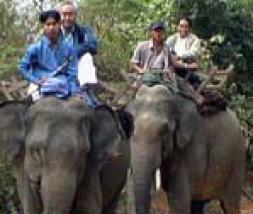 We could also add to the list Hudson Taylor, the first missionary to China’s interior and founder of the China Inland mission; Titus Coan, the mighty evangelist during Hawaii’s Great Awakening between the years 1835-1840 that saw thousands of Hawaiians come to faith in Christ; and a countless parade of others. Missionaries such as these endured up to six months in the confining, small births of ships, seasick, tossing and turning, seeing their wives give birth to children at sea, and then landing in foreign lands, having laid on the altar any hope of ever seeing their relatives again.
We could also add to the list Hudson Taylor, the first missionary to China’s interior and founder of the China Inland mission; Titus Coan, the mighty evangelist during Hawaii’s Great Awakening between the years 1835-1840 that saw thousands of Hawaiians come to faith in Christ; and a countless parade of others. Missionaries such as these endured up to six months in the confining, small births of ships, seasick, tossing and turning, seeing their wives give birth to children at sea, and then landing in foreign lands, having laid on the altar any hope of ever seeing their relatives again.
The lure and romance of becoming a missionary and possibly being added to such an honorary list as this is compelling. A more modern example of a pioneer missionary who paid the ultimate price was Jim Elliot, missionary to Ecuador. There is no way that we cannot but pay homage to such missionary heroes who did so much to plant the seeds of the gospel in lands where there had never been a testimony to the saving love and grace of our Lord Jesus Christ before.
But the world we live in today is a different world. Two hundred years ago one could go to virtually any country in the world to be a missionary if he or she had a vision, the courage, and means of support. The missionary movement that began in the late 1700s and early 1800s was a sovereign move by the Spirit of God sending people out. But times have changed. We now have to take another look at modern missionary methods to see if what worked in the past is still the most relevant and effective strategy to employ today.
Let’s look at the countries of India, Burma and China where foreign missionaries first set foot. Today all of these countries are closed to foreign missionaries. (It is interesting to note that the populations of India and China alone combine to make up 1/3 of the world’s population and are at the vortex of where we find the majority of the world’s unreached people groups.) Add to this list Vietnam, Laos, Cuba and many of the Muslim countries and we find that more than 60% of the world’s population lives in countries closed to Christian missionaries from North America.
 Doors Close but God’s Work Continues
Doors Close but God’s Work Continues
In India there are now approximately 1.3 billion people. An estimated 3% are Christians. Still only about 15-20% of India’s cities, towns and villages have a visible Christian witness today. Though foreign missionaries are barred, today God is mobilizing thousands of Indian evangelists and church planters to take the gospel to places where people have never seen a Christian before. The same is true in Burma, where the Christian population now exceeds 10 per cent.
In China, 150 years of missionary work ended in 1949 when the Communists expelled 5,600 foreign missionaries. Westerners wondered if the estimated 750,000 Christians would survive the harsh rule and persecution of an atheistic government bent on exterminating those bearing the name of Christ. But today, almost 70 years later, the number of believers in China has grown to more than 100 million, with estimates of between 20,000-30,000 people a day coming to Christ. This dramatic growth has taken place by the Chinese reaching the Chinese.
Recognizing God’s Work and Working with God
This story has repeated itself in almost every country where foreigners went to colonize. Foreign missionaries introduced the gospel, but then exponential growth took place in the church when national workers began to bear the responsibility of reaching those in their own country. Christianity does not thrive as long as it is perceived as a “foreign” religion. Indigenous Christians who speak the language of the people, know the culture, live life-styles consistent with their countrymen (as opposed to the much higher standard of living enjoyed by most foreign missionaries) are much better suited to reach their own people and are far more effective in doing so.
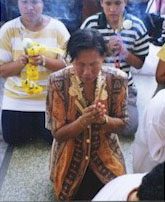 A New Strategy in World Missions
A New Strategy in World Missions
What, then, is the best way for mission-minded Christians in western nations to help reach the remaining unreached people of the world? Since two-thirds of the “unreached” live in countries that are not accessible to American missionaries, the best strategy is to find the national Christians that God is using in places where we can’t go. We can begin praying for them and then partnering financially with those who have access to the people we can’t reach.
Most of the least evangelized countries are also the poorest countries, where the average income per person is less than a few dollars a day. They can be found in what is known as the “10/40 window,” which stretches across North Africa, most of the Middle East, parts of Central Asia, and into India, China and Southeast Asia. With as little as $250-$500 a month for support, thousands more national workers could be sent into the harvest fields in these countries. By investing in special projects that can multiply the effectiveness of their work, such as Christian satellite TV broaddcasts, Internet evangelism and discipleship, social media, Bibles, training materials, micro-business investments that will lead to self-sustainability, national missionaries can be empowered to reach even more people than they otherwise could do and become even more effective in their work.
It’s important for concerned Christians to adopt a mission strategy that makes sense in today’s world. God has blessed Americans with resources and a standard of living far beyond that of Christians who are serving the Lord in the least evangelized, poorer countries of the world. In most cases, by staying home, keeping our jobs and sending a portion of our surplus, great things can be accomplished to advance the cause of the gospel.
Each year countless devoted, well-intentioned Christians from the West head for the mission field, praying that God will use them in a mighty way. But isn’t it fair to ask the question: Is this still the most efficient use of our resources when it comes to financing world missions and sending out missionaries? The typical cost to send a foreign missionary family overseas could easily run between $60,000 to $100,000 a year. Yet in a majority of the poorer countries around the world, indigenous workers require only $3,000-$6,000 annually. Wouldn’t it make more sense to re-direct our resources to support 25-30 indigenous workers for the same amount it takes for one American family to go?
What’s wrong with this Picture?
What’s happening today in Turkey is a classic example of what is wrong with traditional mission work. With a population of 80 million people–99 % of whom are Muslims, Turkey is one of the least evangelized countries in the Middle East. There are only 10,000 or so Turkish believers known to be part of local churches, with higher estimates if you count the number of secret believers who don’t attend churches but who have come to Christ largely through Christian satellite TV. Yet there are more than 1,500 foreign missionaries. That’s a ratio of about one missionary for every seven believers! You have to ask yourself, “What are they all doing?” Most are involved getting used to living in the new culture, taking language courses, traveling, sampling different restaurants, and in many instances, attending an international church where they make friendships with other foreign missionaries. The normal time it takes for adequate language acquisition in order to become semi-fluent and able to really communicate the gospel and get familiar with the Scriptures is about four years. But the fact is that about half the mission-force turns over every year. Most people last about a year or two and then go home, having never mastered the language and with no fruit to show for it. Using conservative figures of $40,000 per missionary, that’s roughly $60 million a year being spent on mission work in Turkey and the number of indigenous believers is barely experiencing any growth!
population of 80 million people–99 % of whom are Muslims, Turkey is one of the least evangelized countries in the Middle East. There are only 10,000 or so Turkish believers known to be part of local churches, with higher estimates if you count the number of secret believers who don’t attend churches but who have come to Christ largely through Christian satellite TV. Yet there are more than 1,500 foreign missionaries. That’s a ratio of about one missionary for every seven believers! You have to ask yourself, “What are they all doing?” Most are involved getting used to living in the new culture, taking language courses, traveling, sampling different restaurants, and in many instances, attending an international church where they make friendships with other foreign missionaries. The normal time it takes for adequate language acquisition in order to become semi-fluent and able to really communicate the gospel and get familiar with the Scriptures is about four years. But the fact is that about half the mission-force turns over every year. Most people last about a year or two and then go home, having never mastered the language and with no fruit to show for it. Using conservative figures of $40,000 per missionary, that’s roughly $60 million a year being spent on mission work in Turkey and the number of indigenous believers is barely experiencing any growth!
The leadership within the small indigenous church is frustrated with all the foreigners. Most pastors in the Turkish churches are poor. They not only have their responsibilities in the church, but many are working two or three jobs just to earn a living. They have a vision to reach their own people, but lack resources. The foreigners become to new Turkish Christians the “model” for what full-time Christian workers are supposed to look like. But what are they modeling? The majority are overly concerned about not doing anything that will jeopardize their visas and consequently are very cautious in their proclamation of the gospel. The indigenous believers on the other hand, especially after the martyrdom of three believers in 2007, are gaining a new boldness, and are willing to suffer and lay it all on the line for Christ. What kind of leadership will provide the best role model? Those who, after Paul’s tradition, have to work with their hands to support themselves and their families and still handle their church responsibilities, or the foreign missionaries, who spend a lot of time at home watching TV, going to language classes, and sipping tea in the restaurants?
What has just been presented here certainly does not take into account the “good” foreign workers. They do exist, but their breed is extremely rare. Some who have labored for over two decades in Turkey, are exemplary, and have earned the respect of the indigenous community. They must be commended for their endurance over all these years and for laying the groundwork, doing translation work, and being there to help disciple many within the present generation of leadership in the indigenous church. But they are the exceptions because the success rate of foreign missionaries is dismal. The fact is that most of the missionaries that head out overseas have had no experience or track record in evangelism or church planting. Simply stated, we are not sending our best.
The Challenge for This Generation
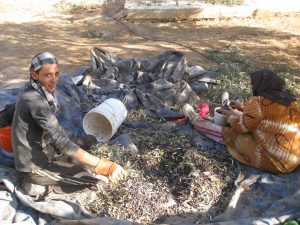 The Church of the last generation witnessed the worldwide battle against Communism. It took about 70 years for the grip of Communism to be broken and give millions of people the opportunity to hear the gospel and be freed from its cruel atheistic grasp. But today’s battle is against a much stronger, more formidable foe. We’re battling the spirit behind radical Islam. More than 1.6 billion people in this world are Muslim. In 1900, about one person out of eight was a Muslim. In 1945, it was one in seven; in 1985, it was one in six; in 2006, it was one in five. Today it is one out of four. Yet less than 2% of all missions giving is directed toward the Muslim world. This presents some real challenges for the Church.
The Church of the last generation witnessed the worldwide battle against Communism. It took about 70 years for the grip of Communism to be broken and give millions of people the opportunity to hear the gospel and be freed from its cruel atheistic grasp. But today’s battle is against a much stronger, more formidable foe. We’re battling the spirit behind radical Islam. More than 1.6 billion people in this world are Muslim. In 1900, about one person out of eight was a Muslim. In 1945, it was one in seven; in 1985, it was one in six; in 2006, it was one in five. Today it is one out of four. Yet less than 2% of all missions giving is directed toward the Muslim world. This presents some real challenges for the Church.
We must ask ourselves, however, what is the best strategy to reach this part of the world? Is it to send more Americans or Westerners out as missionaries? Given the popularity of Americans in most Middle East countries, if it were even possible to enter legally and try to do missionary work, an American would begin with at least two strikes against him/or her. What are we going to do to reach those in countries like Iran or Saudi Arabia? For starters, we must face the fact that it is not even possible for Americans to get a visa to go there.
One strategy that has been tried over the past decade or more, with relatively little success, is for missionaries to go under the auspices of having a business. Some people are called to business and if that can give them access to foreign cultures, and if they hear the call to go, they should be encouraged to do so. But the garden-variety missionary who tries to enter a country “posing” as a business person just to gain entry will be detected very easily and early on by the locals as being a fraud, and will instantly lose all credibility.
The fact is that God is at work in the Muslim world today in ways that most Christians from the West are unaware of. Christian satellite TV programs, for instance, are being broadcast in Arabic (reaching the greater Middle East) and in Farsi (reaching Iran and Afghanistan), Urdu (reaching Pakistan), and Indonesian (reaching Indonesia, the country with the largest Muslim population in the world), and are having an impact like nothing before in history in bringing Muslims to Christ.
In Iran there may now be as many as a million Christians. More people have come to Christ since the Islamic Revolution in 1979 than in all the 1300 previous years combined since Islam first came to that country. A house church movement is exploding in Iran, and the church continues to grow under indigenous leadership, in spite of intimidation and persecution.
These are examples of where the church in “closed countries” is rapidly growing and there is an open door for the gospel. If we, as Westerners want to participate in this harvest, how can we be most effective in doing so? We can partner with those indigenous ministries that are on the ground, reaching people in their own language, who know the culture, and who do have access to those in need of hearing the good news of Christ.
Going Forward: The Role for Americans in Today’s Changing World
If we are serious about seeing the gospel reach all nations (all people groups); healthy, reproducible indigenous churches planted; and helping the poor and oppressed, especially in the most needy areas of the world, then adopting a strategy of identifying and partnering with effective indigenous ministries is the solution. Fifty years ago the concept of partnering with indigenous missions was virtually unknown to Western Christians who were interested in seeing the world reached for Christ. The traditional approach of sending foreigners as a missionaries overseas was the only paradigm. But times have changed.
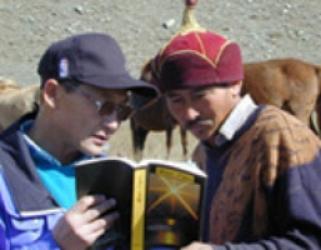 Twenty years ago there were only a handful of Christian organizations that were seeing the value of partnering with indigenous missionaries. But today there are numerous organizations, along with churches, and individuals that are catching this vision.
Twenty years ago there were only a handful of Christian organizations that were seeing the value of partnering with indigenous missionaries. But today there are numerous organizations, along with churches, and individuals that are catching this vision.
Does this mean there is no place for Westerners going abroad to do mission work? In today’s world, there are opportunities, but they are limited. Christians with technology skills can add a great deal to enhance mission work abroad if they can find ways to share their knowledge with their indigenous counterparts in foreign countries. Businessmen can start businesses and provide skills and income opportunities for Christians in foreign lands and thereby contribute to local Christian economies, especially in areas of persecution, such as in the Muslim world, where becoming a Christian can result in a person losing his or her job, being kicked out of his family, and being unable to find employment. Christians with a teaching ministry who have an extra-local calling, experience and giftedness, can often be valuable assets in places where the church is young and seasoned leadership has not yet developed. Short-term trips to teach and equip those abroad can be of great benefit in building up the church, if undertaken with a humble spirit and a serving attitude.
 Though short-term opportunities exist, the days of long-term American missionaries going overseas to win the world for Christ are rapidly diminishing. We should not look at this as a bad thing, but gladly recognize and welcome new opportunities to work with God and see indigenous churches all around the world be lifted up so they can have their turn to bear witness for Christ to their own people. Probably one of the greatest forces for the advancement of world missions going forward will be the role that Christian businessmen and women and others with resources will play in their role of partnering with indigenous mission leaders to reach their own overseas. An estimated 90% of all Christian philanthropy world-wide comes from the USA. But sadly, 90% of those resources remain in the USA. Less than 10% are earmarked for world missions, and of that 10%, the majority of those funds are tied up in traditional mission programs. Only a small fraction finds their way into the hands of the effective, indigenous ministries on the field that are really getting the job done.
Though short-term opportunities exist, the days of long-term American missionaries going overseas to win the world for Christ are rapidly diminishing. We should not look at this as a bad thing, but gladly recognize and welcome new opportunities to work with God and see indigenous churches all around the world be lifted up so they can have their turn to bear witness for Christ to their own people. Probably one of the greatest forces for the advancement of world missions going forward will be the role that Christian businessmen and women and others with resources will play in their role of partnering with indigenous mission leaders to reach their own overseas. An estimated 90% of all Christian philanthropy world-wide comes from the USA. But sadly, 90% of those resources remain in the USA. Less than 10% are earmarked for world missions, and of that 10%, the majority of those funds are tied up in traditional mission programs. Only a small fraction finds their way into the hands of the effective, indigenous ministries on the field that are really getting the job done.
Times have changed. Minds must change. Just think what God could do as more and more people catch this vision, adopt this new strategy of investing in indigenous mission initiatives, and begin to responsibly re-direct and unleash their resources to reach the world for Christ!
